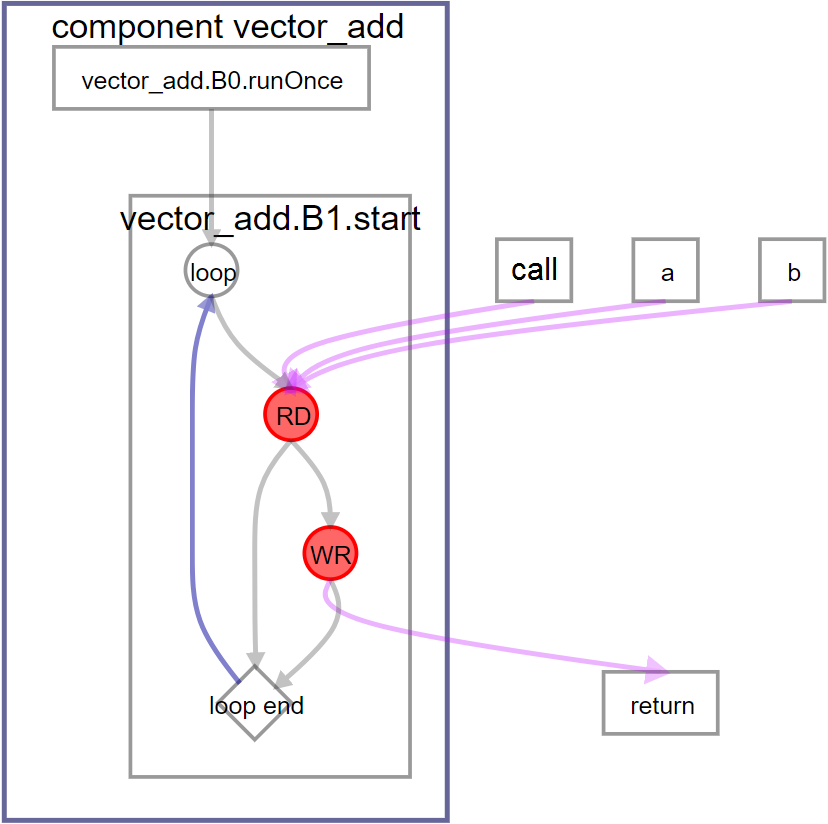Visible to Intel only — GUID: iti1511996061154
Ixiasoft
Visible to Intel only — GUID: iti1511996061154
Ixiasoft
4.1.6. Pass-by-Value Interface
For software developers accustomed to writing code that targets a CPU, passing each element in an array by value might be unintuitive because it typically results in many function calls or large parameters. However, for code that targets an FPGA device, passing array elements by value can result in smaller and simpler hardware on the FPGA device.
The vector addition example can be coded to pass the vector array elements by value as follows. A struct is used to pass the entire array (of 8 data elements) by value.
- Define element-wise copy constructors.
- Define element-wise copy assignment operators.
- Add the hls_register memory attribute to all struct members in the definition.
struct int_v8 {
hls_register int data[8];
//copy assignment operator
int_v8 operator=(const int_v8& org) {
#pragma unroll
for (int i=0; i< 8; i++) {
data[i] = org.data[i] ;
}
return *this;
}
//copy constructor
int_v8 (const int_v8& org) {
#pragma unroll
for (int i=0; i< 8; i++) {
data[i] = org.data[i] ;
}
}
//default construct & destructor
int_v8() {};
~int_v8() {};
};
component int_v8 vector_add(
int_v8 a,
int_v8 b) {
int_v8 c;
#pragma unroll 8
for (int i = 0; i < 8; ++i) {
c.data[i] = a.data[i]
+ b.data[i];
}
return c;
}
This component takes and processes only eight elements of vector a and vector b, and returns eight elements of vector c. To compute 1024 elements for the example, the component needs to be called 128 times (1024/8). While in previous examples the component contained loops that were pipelined, here the component is invoked many times, and each of the invocations are pipelined.

| QoR Metric | Pointer | Avalon® MM Host | Avalon® MM Agent | Avalon® ST | Pass-by-Value |
|---|---|---|---|---|---|
| ALMs | 15593.5 | 643 | 490.5 | 314.5 | 130 |
| DSPs | 0 | 0 | 0 | 0 | 0 |
| RAMs | 30 | 0 | 48 | 0 | 0 |
| fMAX (MHz)2 | 298.6 | 472.37 | 498.26 | 389.71 | 581.06 |
| Latency (cycles) | 24071 | 142 | 139 | 134 | 128 |
| Initiation Interval (II) (cycles) | ~508 | 1 | 1 | 1 | 1 |
| 1The compilation flow used to calculate the QoR metrics used Intel® Quartus® Prime Pro Edition Version 17.1. |
| 2The fMAX measurement was calculated from a single seed. |